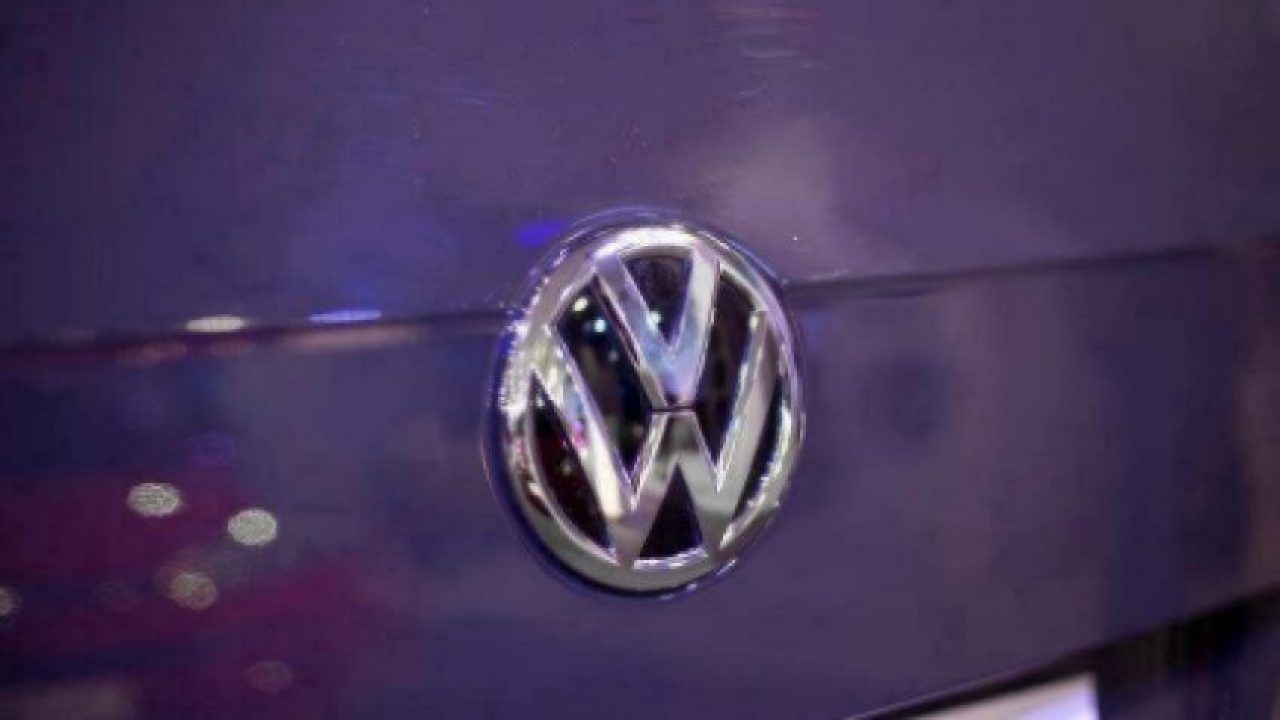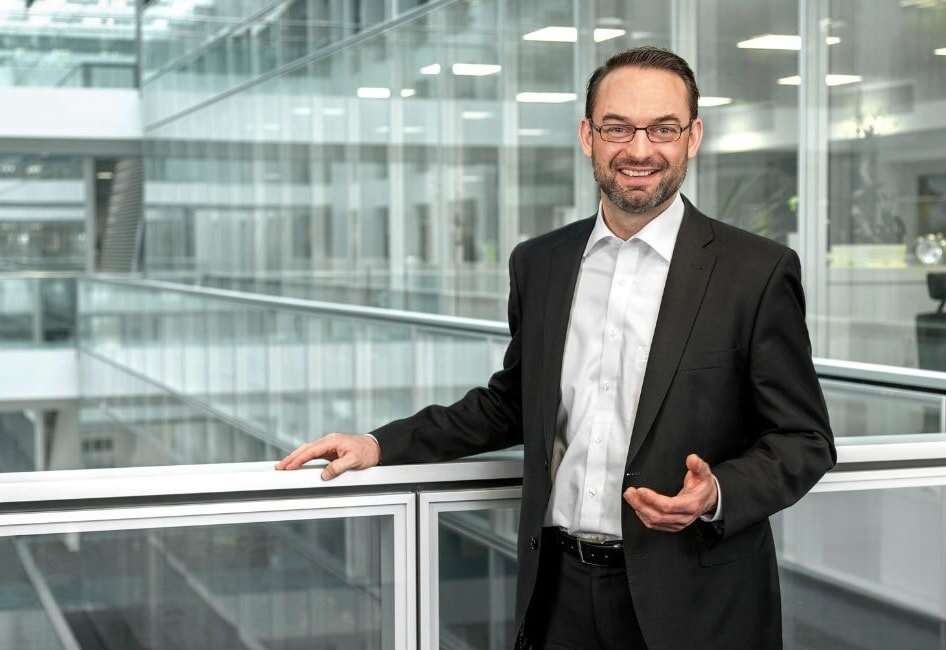VW Shows Suppliers the Door
Article By : Junko Yoshida

VW reportedly told its suppliers: we only need half of you. What changes are on the way and where must they happen?
PARIS — The Volkswagen Group has gone public with an ambitious strategy to reduce the number of engine control units (ECUs) inside each of its vehicles from as many as 70 to three, and to develop almost all the needed software — presently supplied by as many as 200 vendors — in-house.
Volkswagen’s new strategy, if everything goes according to the plan, will render redundant many of the links in its supply chain.
At an event this past summer, Christian Senger, a Volkswagen Group board of management member who oversees the automaker’s digital activities, reportedly told the company’s suppliers: “I really only need half of you.”

(Image: Volkswagen)
Nobody today, however, is surprised. Ian Riches, vice president, Global Automotive Practice at Strategy Analytics, told EE Times, “As the car is now increasingly software-defined, the capability and quality of that software effectively dictates the driving and ownership experience.” He said, “In that sense, [Volkswagen’s] strategy very much makes sense. It puts VW firmly in control of the core technology that will increasingly differentiate its products.”
Colin Barnden, lead analyst at Semicast Research, agreed. “VW is proposing to ‘conduct the orchestra.’”
Many industry observers said this vision was a long time in coming. “We’ve been calling for this forever,” said Phil Magney, founder and principal at VSI Labs. Somebody had to go first, though. What’s new about VW’s decision is that “for the first time a major OEM to put a stake in the ground, saying that ‘we are all in on a change’ to the fundamental architecture,” Magney said.
“Someone has to lead the overall effort and set the direction for what would be a radical change in the electronic/electrical architecture of the car,” said Barnden. In his opinion, “This needs to be ‘top-down’ so a tier one or tier two would not be able to lead it, although I would expect suppliers like Bosch, Conti, Magna, Nvidia, Xilinx and ZF would be heavily involved.”
Why integrate hardware?
Of course, practically all stakeholders in the automotive supply chain — car OEMs, chip companies and IP suppliers — have been talking for a decade about the need for further integration of ECUs. Carmakers’ preference to design their own system on chips for ADAS and autonomous vehicles is no secret.
David Fritz, global technology manager, Autonomous and ADAS at Siemens AG, told EE Times a couple of months ago, “I have actually seen a block diagram of AV SoC internally designed by every major car OEM.” He stressed, “Tesla isn’t alone. Every carmaker wants to control its own destiny.”
Speaking of the industry’s ultimate goal to get down to three domain controllers for vehicles, Semicast’s Barden speculated, “I would expect the OEMs will go through several iterations on the way and over many years. I would say you could get the electronic architecture down to the following three”:
- Propulsion: ICE, EV, hybrid
- Safety: airbag, braking, steering, ADAS
- Body: air con, door modules, seat electronics, parking brake, lighting, security
Barnden said, “The first two would have to be ASIL-D, the last probably ASIL-B. Also IVI (infotainment) does not fit obviously into any of them, although from an ASIL perspective it is closer to body than either propulsion or safety.”
As logical as the ECU integration sounds, why hasn’t this happened yet? Many analysts believe that it’s inertia among the OEMs.
Magney observed, “What VW announced has been talked about for a long time and is the general direction of most if not all OEMs. There has been a very slow movement to centralized domain control.” Why? The mentality of “If it ain’t broke don’t fix it” has ruled. Magney explained, “Traditional architectures work very well.”
If that’s the case, why change? Magney said: “We are at the limit of what those traditional architectures can support when it comes to life cycle management. Infotainment proved this and the OEMs finally gave in (a little bit anyway). Now we have a greater movement toward intelligent feature enablement which is always changing and improving. The new architecture supports this, the legacy does not.”
Black boxes
One big reason prompting OEMs to seek more integration is to control their own destiny, a common theme expressed to EE Times over the years by many industry observers.
VSI Labs’ Magney said, “Currently VW claims more than 70 ECUs running discrete functions that are basically black boxes. This is costly and hard to scale but more importantly this is hard to manage from a software standpoint.”
Semicast’s Barnden concurred. “What we are seeing is a move away from one function per ECU to ‘domain controllers.’ Something like an S-Class or A8 has more than one hundred ECUs today.” Integration is critical, because of the problem that comes with “testing the interoperability of all the ECUs.”
Weight problems
Barnden also mentioned the weight issue. Problems derive from “the associated weight of the wiring harness needed to connect everything together. Just like in aviation, weight equals fuel consumption.” He explained, “As emissions testing becomes ever more stringent, the OEMs have to find ways to cut the physical weight of the vehicle to improve fuel efficiency. Reducing the number of ECUs (and hence the complexity of the wiring harness) is a great way to proceed. The trend towards automotive Ethernet is also part of what is happening here; replacing point-to-point connections and CAN/Flexray/LIN buses with one shared very high-speed network.”
Asked about VW’s motivation, Barnden speculated, “This is probably VW further reacting to the ramifications of ‘Dieselgate’ and having to take the lead with emissions reductions in a truly radical way. The driver behind all of this is politics i.e. “Extinction Rebellion and Greta Thunberg.”
Full software stack
Magney noted, “VW is going full-stack software. By this, I mean full vehicle stack… which is similar to Tesla in that all software is developed in-house.”
Industry analysts tend to endorse VW’s intent. As Magney said, “It is the right thing to do. You cannot afford not to move in this direction.” Notwithstanding its goals, however, whether VW can actually do the right thing remains unsettled. Magney noted, “This comes with major challenges. And do the OEMs have the capacity to pull this off? We shall see.”
Strategy Analytics’ Riches acknowledged that VW’s stated mission is aspirational. He noted, “The idea of going from writing little to none of the software on a vehicle to writing all of it within a short space of time is clearly a HUGE ask.”
Conway’s Law
Perhaps, the most pointed assessment came from Phil Koopman, CTO of Edge Case Research and professor at Carnegie Mellon University.
In his LinkedIn post, he referred to a VW story in Automotive News, and wrote: “VW says it is going to a centralized computer architecture and pulling software responsibility in-house instead of relying upon supplier HW+SW modules. Gutsy move to capture more value. It won’t be easy.”
Koopman wondered out loud how Conway’s Law will affect things. Conway’s Law was introduced by computer programmer Melvin Conway in 1967. Conway stated:
organizations which design systems … are constrained to produce designs which are copies of the communication structures of these organizations.
The Law alludes to the fact that in order for a software module to function, multiple authors must communicate frequently with each other. “Or simply: systems look like organizations that produce them,” as Koopman put it.
In short, VW’s software stack can only be as good as VW’s software talent.
On one hand, the automotive industry appears to agree that OEMs taking control of the whole vehicle (both software and hardware) is the right thing to do.
Not everyone is confident they can pull it off, and nobody has a blueprint for trying. Koopman said, “Big changes will likely be needed to succeed.” But what exactly are those big changes?
There are organizational issues (inside the OEM), changes required on the industry level, and changes in how tech companies and traditional car OEMs envision the path forward.
Strategy Analytics’ Riches noted, “The days of software being well and truly glued together with hardware are over.”
He believes that in the long-term, there are two viable ways for carmakers to go. “The first is the VW approach,” said Riches. “Bring it all in-house.”
“The second is for OEMs to act as system integrators and source the best software for each particular task from whoever they perceive to be the best vendor.”
Riches said that the first approach gives absolute control, and in some ways makes things simpler. “However, the likelihood of VW managing to create the absolute best-in-class software across every function and domain is not credible,” he cautioned. “No one could realistically claim to be able to do that.”
The second approach has more flexibility. “But the complexity of managing and integrating multiple different vendors, all no doubt likely to point fingers elsewhere should something go wrong, should not be underestimated.”
To be clear, the automotive industry has Federal Motor Vehicle Safety Standards (FMVSS). This regulation specifies design, construction, performance, and durability requirements for motor vehicles, regulating Automobile safety-related components, systems, and design features. But for the growing load of electronic contents and software codes running on ADAS and autonomous vehicles, there exist neither ADAS nor AV specs, standards, and no regulatory oversight.
For an automotive industry accustomed to “self-certification” of vehicle safety, the OEMs’ urge to control the entire hardware and software system is understandable.
But carmakers are looking back at a bygone era. The closed approach they would prefer can only push themselves into a corner, since they are likely to develop systems unique to their own hardware.
In the Automotive News article, the story described a VW operating system as “similar to the background software that operates smartphones and computers.” The facts challenge this assertion. Indeed, most smartphones today are built on an open operating system. Smartphone suppliers have a variety of apps processors and modem chips to choose from to build their handsets.
Unless VW fancies itself as the automotive equivalent to Apple, it faces a long road ahead to accomplish its ambition.
Riches posed the most pertinent question: “Can the leviathan that is VW create the internal agility and flexibility required so that managing tens or hundreds of internal teams is actually less complex and error-prone than managing the same number of external suppliers?”
Subscribe to Newsletter
Test Qr code text s ss






